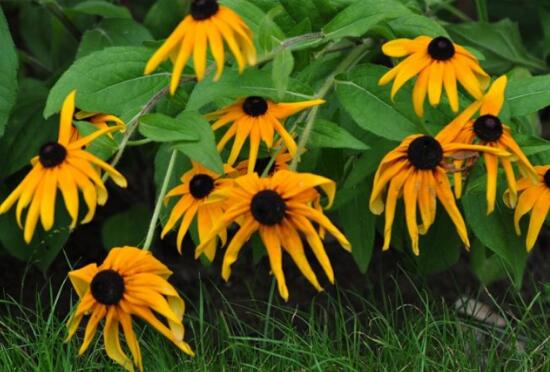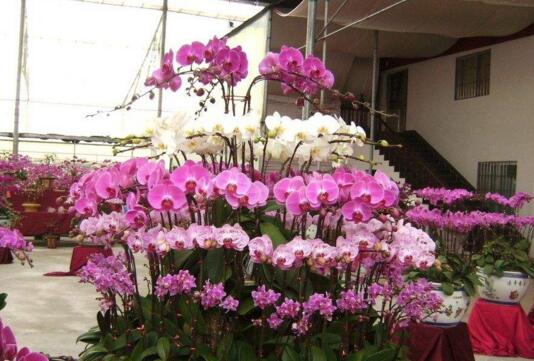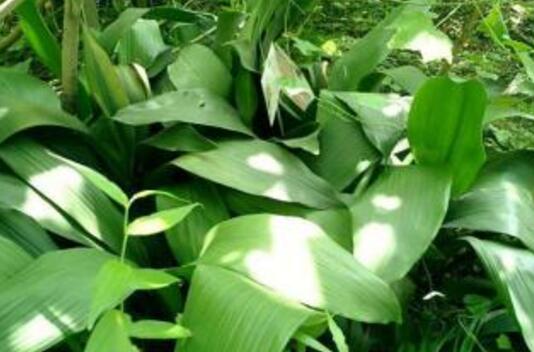How to do gerbera leaves yellowing, proper watering control fertilization/soil can not be too little
African chrysanthemum, a strong ornamental plant, is loved by people for its beautiful flowers and bright colors. In life, there are many people who raise African chrysanthemum, but when beginners raise it, they often encounter the situation that the leaves turn yellow, which not only affects the viewing, but also dies when it is serious. What about the leaves of African chrysanthemum turning yellow? Here are some of the reasons why the leaves turn yellow. Let's go and have a look.
First, how should the leaves of African chrysanthemum turn yellow? find the cause.

Growing plants indoors, unlike outdoors, requires us to create a growing environment, so if it is not properly maintained, such as not strictly following the breeding methods of African chrysanthemum, there will be all kinds of problems, including yellowing leaves. As for what to do about the yellowing of gerbera leaves, the editor summed up five points and attached a solution, and we moved on.
Second, the causes and solutions of yellowing of gerbera leaves.
1. Environmental mutation
There are actually many reasons for the yellowing of gerbera leaves, but environmental factors are the first thing to consider. The reason for this is that many flower friends buy African chrysanthemum online, which can easily lead to large geographical span, African chrysanthemum can not adapt for a while, resulting in leaf yellow symptoms.
Solution: at this time, you can communicate with the store to understand the growth environment of African chrysanthemum before buying, and then we change it to the same environment at home. Then slowly change until fully adapted to the current environment, after a period of time, African chrysanthemum will return to health.
2. Too little soil
With regard to the soil for raising African chrysanthemum, people may only pay attention to looseness, fertility, drainage, slightly acidity and so on, thus ignoring the amount of soil. But potted African chrysanthemum, if there is too little soil in the pot, will affect the growth space of the plant, resulting in the root system can not freely extend down and around. The result is that the growth and development of African chrysanthemum is limited, and the leaves turn yellow.
Solution: if there is too little soil, it is very simple, change the basin soil, change a large basin, filled with African chrysanthemum like soil, after a period of maintenance can be restored.
3. Overwatering (water yellow)
African chrysanthemum likes a humid environment, so we usually have to water more. But beginners are easy to make mistakes at this time, because they control the amount of water and times of watering, resulting in too much watering, resulting in stagnant water in the basin soil, causing plants to lose oxygen and rotting roots, and finally causing tender leaves to turn yellowish, and flowers and leaves gradually turn dark yellow one after another.
Solution: immediately after discovery, the watering should be controlled, and then the flowerpot should be moved to a ventilated sunny place to allow moisture to evaporate quickly and often loosen the soil; when the disease is serious, the whole land should be removed from the pot and placed in a dry mound to make the water seep out quickly. wait for the drooping branches and leaves to recover and then plant them back into the pot.
4. Too little watering (dry yellow)
Too much watering is not good, but too little watering is even less, which will lead to the yellowing of gerbera leaves. Because long-term pouring half of water or missed irrigation, so that the basin soil moisture is very little, which will make the leaf water evaporation greater than absorption, resulting in water supply falling short of demand, resulting in leaf yellowing. Yellowing is generally gradually yellowing upward from the lower leaves, scorched and shedding, and when the petiole is serious, the petiole is drooping and wilting.
Solution: immediately move the flowerpot to a cool place, then spray some water on the leaves and pour a small amount of water. Later, as the leaves gradually recover, and then increase the amount of water, the African chrysanthemum will slowly return to health.
5. Excessive fertilization (fat yellow)
African chrysanthemum likes fertilizer and needs sufficient nutrients during the growing period, but too much fertilizer, especially when applying too much nitrogen fertilizer and lack of phosphorus and potassium fertilizer, is easy to cause the leaves to turn yellow. Symptoms: the new leaves are thick, most of the leaves are uneven, the old leaves gradually turn yellow and fall off, when the leaf tip dries up seriously, and even the whole leaf is scorched yellow.
Solution: if it is fat yellow, stop fertilizing immediately and increase the amount of water to let the fertilizer flow out of the drain hole; or simply, leave the pot soil and let the plant refresh again. Then maintain for a period of time, the leaves will become green and shiny again.
6. Fertilizing too little (hungry yellow)
It is not good to apply too much fertilizer, and even less, which is one of the reasons for the yellowing of gerbera leaves. Without applying nitrogen fertilizer or changing basin soil for a long time, the lack of nitrogen nutrition in the soil will lead to thin branches and leaves and leaves become thin and yellow.
Solution: increase fertilization appropriately, pour the pot in time when it is serious, remove the plant, replace it with a larger pot, and load it into a new loose and fertile culture soil. After it resumes its growth, according to the fertilization method of African chrysanthemum, the correct fertilization.
Like human disease, plants can get sick because of improper maintenance, so in order to avoid the reverse of the above situation, we must take good care of it. Of course, don't panic if something goes wrong, just follow the above method. With regard to the yellowing of gerbera leaves, the editor has introduced this, hoping to give you some help.
How to raise Fulang flower / African chrysanthemum, culture methods and matters needing attention of potted African chrysanthemum
African chrysanthemum, also known as Fulang flower, is a famous and floating flower with large and colorful flowers, which is often used as a material for flower arrangement and dried flowers. In life, many flower friends like to grow their own gerbera, so how to grow gerbera? The following are the breeding methods and precautions of African chrysanthemum selected by the editor, which are very comprehensive. Friends who want to raise them must take a look at them.
First, how to raise gerbera and understand its habits
Indoor farming is not like the wild, everything needs to be created by ourselves, so how to raise African chrysanthemum, we must first understand its growth habits, and then to create an environment conducive to its growth. In this regard, the editor will bring you the breeding methods and matters needing attention of African chrysanthemum from the aspects of soil, light, temperature, watering, fertilization, pruning and so on.
2. Culture methods and matters needing attention of potted African chrysanthemum
1. Soil, slightly acidic
How to raise potted African chrysanthemum, first of all, it is natural to choose soil, whether it is to plant their own, or to change the pot soil, the choice of soil is very important. According to the growth habits of African chrysanthemum, we should choose a slightly acidic soil with loose, fertile and good drainage.
Pot soil selection: the basin does not need to be too large, 12-18cm is suitable for African chrysanthemum; soil can be made of 2 parts of peat and 1 part of perlite, or peat-based culture soil sold in the market, such as Cuiyun and so on.
2. Light, all-day sunshine in winter
In the process of cultivating gerbera, we need to give it enough light. Because African chrysanthemum likes light and requires more light, it becomes stronger and stronger when there is no lack of water, and it grows faster and blossoms more.
Note: be sure to give African chrysanthemum sufficient light, in the lack of light, the need for artificial light. In addition, in summer, when the sun is too strong, it is necessary to shield the gerbera from some strong sunlight, while in winter, try to keep full sunshine.
3. Temperature, 20-25 ℃
In the breeding method of gerbera, temperature is also a point that we need to pay attention to. It is understood that African chrysanthemum is neither heat-resistant nor cold-resistant, so it is best to control the temperature between 20-25 ℃ when breeding indoors.
Note: in winter, the temperature should not be lower than 10 ℃, otherwise African chrysanthemum will stop growing. It is worth mentioning that the limit tolerance temperature of African chrysanthemum is 5-40 ℃, but it should not be too long-lasting. We must pay attention to this.
4. Watering
How to raise African chrysanthemum, watering is indispensable. It is understood that African chrysanthemum likes a humid environment, in the growing period, we should ensure an adequate water supply. If the temperature is high in summer, it can be watered frequently with thin water, while the temperature in winter is low, and the interval between watering can be longer.
Watering time: people can often touch the leaves of African chrysanthemum with their hands, stiff, do not need water, slightly soft and not wilting is the best time to supply water.
Note: water African chrysanthemum, not at noon, preferably in the morning or evening. Besides, be careful not to pour it in the center of the leaf.
5. Fertilization
After watering, let's talk about fertilization, which is also very important in the cultivation of African chrysanthemum. It is understood that African chrysanthemum has a great demand for fertilizer. Fertilizer should be applied thinly, once a week in spring, less in summer and winter, and once every half a month.
Note: when the temperature is too high or too low, everyone should stop fertilizing. In addition, fertilize African chrysanthemum should be adequate and balanced, like other herbs, use balanced fertilizer of nitrogen, phosphorus and potassium if you want to grow strong. As for how to fertilize African chrysanthemum, there is a specific introduction, so I won't say much here.
6. Pruning
The above points must be done in the process of cultivating African chrysanthemum, and then we need to pay attention to them, such as pruning and diseases and insect pests. The first is pruning, in the growth process, there may be African chrysanthemum leaves yellowing or too dense phenomenon. At this time, we should prune properly and remove yellow leaves, withered leaves and overdense leaves.
7. Diseases and insect pests
In the process of growing up in Africa, it is inevitable that worms will get sick because of improper maintenance and other reasons. Among them, the diseases are powdery mildew, leaf spot, virus and so on, and the pests are whitefly, cabbage worm and thrips. As for what to do, there is a detailed introduction in the pest control of African chrysanthemum, you can refer to the solution.
African chrysanthemum language, how to raise African chrysanthemum
African chrysanthemum is not only a name, but also known as sunflower, sunflower, Fulang flower and gorilla chrysanthemum. It is a perennial herb with many colors, such as white, purple, yellow, red and orange. Then let's take a look at the flower language of African chrysanthemum with the editor, and how to cultivate African chrysanthemum. African chrysanthemum language symbolizes mystery, mutual respect and love, perseverance and no fear of hardship. The flower language of African chrysanthemum is always happy, and it is the most commonly used flower language in China: elegance, nobility and seclusion. Some friends in the potted production of African chrysanthemum have carried out pot culture, so the editor will talk about the aspects that need to be paid attention to in the daily production process of potted African chrysanthemum. First, the greenhouse should be equipped with relevant facilities to meet the conditions of ventilation, sunshade and heating. It is also equipped with seedbeds, floor cloths or irrigation systems if possible. The greenhouse used in production should be airtight and prevent insects from entering it. Second, the temperature should be controlled between 15 ℃ and 25 ℃, and the maximum temperature should not be higher than 30 ℃ and the lowest should not be lower than 13 ℃. Under general production conditions, the average daily temperature ranges from 18 ℃ to 19 ℃. Ventilation should be carried out when the temperature exceeds 19 ℃. Third, the medium should have good air permeability and drainage performance, and the best matrix is the mixture of peat and perlite. The values of pH and EC are 5.5 to 6.0 and 0.7 to 1.0 respectively, which is beneficial to the absorption of trace elements by Gerbera jamesonii. Fourth, potted African chrysanthemum is very sensitive to water, the correct watering time is in the morning or evening, at night to make the plant relatively dry. When African chrysanthemum plants begin to grow roots, they must be watered from the bottom, which can be infiltrated at the bottom; they can be watered from the top of the plant during high temperatures, but pay attention to prevent fungal mildew from the center of the plant. 5. African chrysanthemum prefers fertilizer. The ratio of nitrogen to potassium is 2:1 in summer and 1.5rl in winter. The pH value of fertilizer is between 5.5 and 6.0. 6. The most suitable sunshine length in the growth process of African chrysanthemum is 11 hours to 13 hours, and artificial light can be replenished at low light. Artificial lighting requirements: 3500 to 4000 lux per square meter. The supplementary light was carried out 4 weeks after the plant was put into pot. Conclusion: the above is the flower language of African chrysanthemum and breeding methods, friends in need can carry on the relevant reference. The corresponding breeding methods of different plants are also different, so we should pay attention to the methods of breeding and the prevention and control of diseases and insect pests.
- Prev

What about the rotten roots of butterfly flowers? pruning / disinfecting / changing pots / three tricks to bring butterfly flowers back to life
When we raise butterfly flowers, if we water them improperly or there are germs in the soil, it may cause the roots of butterfly flowers to rot. This phenomenon is called rotting root phenomenon in botanical circles, and it will have a fatal effect on plant growth.
- Next

Why does the orchid not grow new leaves? how to make the orchid burst / the temperature is moderate is the key.
One-leaf orchid is a famous indoor foliage plant, in the process of growth, it keeps beautiful by constantly sprouting new leaves, but some flower lovers find that the new leaves of one-leaf orchid are hardly long, so why not grow new leaves? The editor came to analyze the main reasons for you.
Related
- Fuxing push coffee new agricultural production and marketing class: lack of small-scale processing plants
- Jujube rice field leisure farm deep ploughing Yilan for five years to create a space for organic food and play
- Nongyu Farm-A trial of organic papaya for brave women with advanced technology
- Four points for attention in the prevention and control of diseases and insect pests of edible fungi
- How to add nutrient solution to Edible Fungi
- Is there any good way to control edible fungus mites?
- Open Inoculation Technology of Edible Fungi
- Is there any clever way to use fertilizer for edible fungus in winter?
- What agents are used to kill the pathogens of edible fungi in the mushroom shed?
- Rapid drying of Edible Fungi

